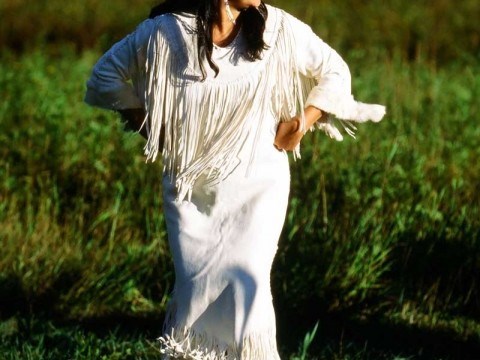What: Lil'wat Nation traditional fashion show
When: Saturday, March 20, 2 p.m.
Where: Squamish Lil'wat Cultural Centre
Cost: By donation
Aboriginal, First Nations and Métis people from across Canada, decked out in traditional dress, welcomed the world to our country during the Olympic opening ceremonies. The Squamish and Lil'wat Nation were amongst the many people who danced and sang their way into B.C. Place Stadium Feb. 12. And while they were there to provide a warm welcome to the millions of people from around the world who had tuned in to watch the Games, they also had another motive: to showcase their own traditions and culture.
Case in point: the Lil'wat Nation. Four of their members - Levi Nelson, Vania Stager, Miles Andrew and elder Mary James - took part in the ceremonies wearing traditional regalia designed by Lil'wat Nation member and designer Barb Peters.
"I kind of picked it up from an elder that was from Mt. Currie, who was a very close friend and a grandmother to my older two (children)," Peters explained.
She then went on to study textile design at University of the Fraser Valley.
Today, she lives in D'Arcy and teaches her craft in the surrounding communities and schools, occasionally helping students design and sew traditional regalia to wear at their graduations.
"On grads, we do the Native inspiration using patterns like a skirt and a top with fur, and then there are traditional things that can be made for dancing," she explained.
Traditional Lil'wat regalia is made of buckskin, adorned with beadwork, painting and fringe. Women typically wear dresses, while men's pieces - shirts or leggings made of breechcloth to dance - are adorned with feathers or fur and often include accessories, like belts and headbands made of inner cedar bark.
But this high-profile Olympic project has offered an opportunity for the designer to showcase her talents to millions from outside of the Lil'wat Nation, putting an original twist on the traditional. Peters was appointed by the Four Host First Nations committee to design the regalia that was worn on-stage.
"I am a designer, but I never really went out there and did anything," she said, explaining that many of her projects are personal or for friends or community members.
For the opening ceremony project, Peters had to do some research into the traditional dress of the Interior Salish people, which proved in the end to be quite similar to that of the Coast Salish.
She designed five complete outfits, complete with illustrations and detailed plans listing materials and fabrics. In the end, four were created and worn at the event.
"I chose them all by dancers, because... regalia is mostly worn when they're dancing," she explained.
Levi Nelson, the speaker, was an eagle dancer, so he wore a headdress made of inner cedar bark and over 30 collected eagle feathers. Vania Stager played the role of the berry picker, while Miles Andrew represented the warrior. Finally, elder Mary Elaine wore a white dress.
Peters also had a team of crafts people and sewers helping to make her designs a reality, completing intricate beadwork and accessories. She also included pieces that were loaned by other members of the Lil'wat Nation.
While Peters had a chance to attend the dress rehearsal of the opening ceremonies the night before the real deal, she watched from home with family the following night, and was a bit disappointed by the lack of attention that was drawn to Lil'wat culture.
"We were all excited with what we saw, but it didn't seem enough to show our culture."
So, Peters and the Four Host First Nations committee have decided to give people a chance to see these Olympic pieces up close and personal during a special fashion show at the Squamish Lil'wat Cultural Centre.
The four Lil'wat Nation members who wore the pieces during the opening ceremonies will be on-hand modeling the outfits on Saturday, March 20.
"It's just a time to show people what was really there," Peters said. "...It was a lot of hard work."




